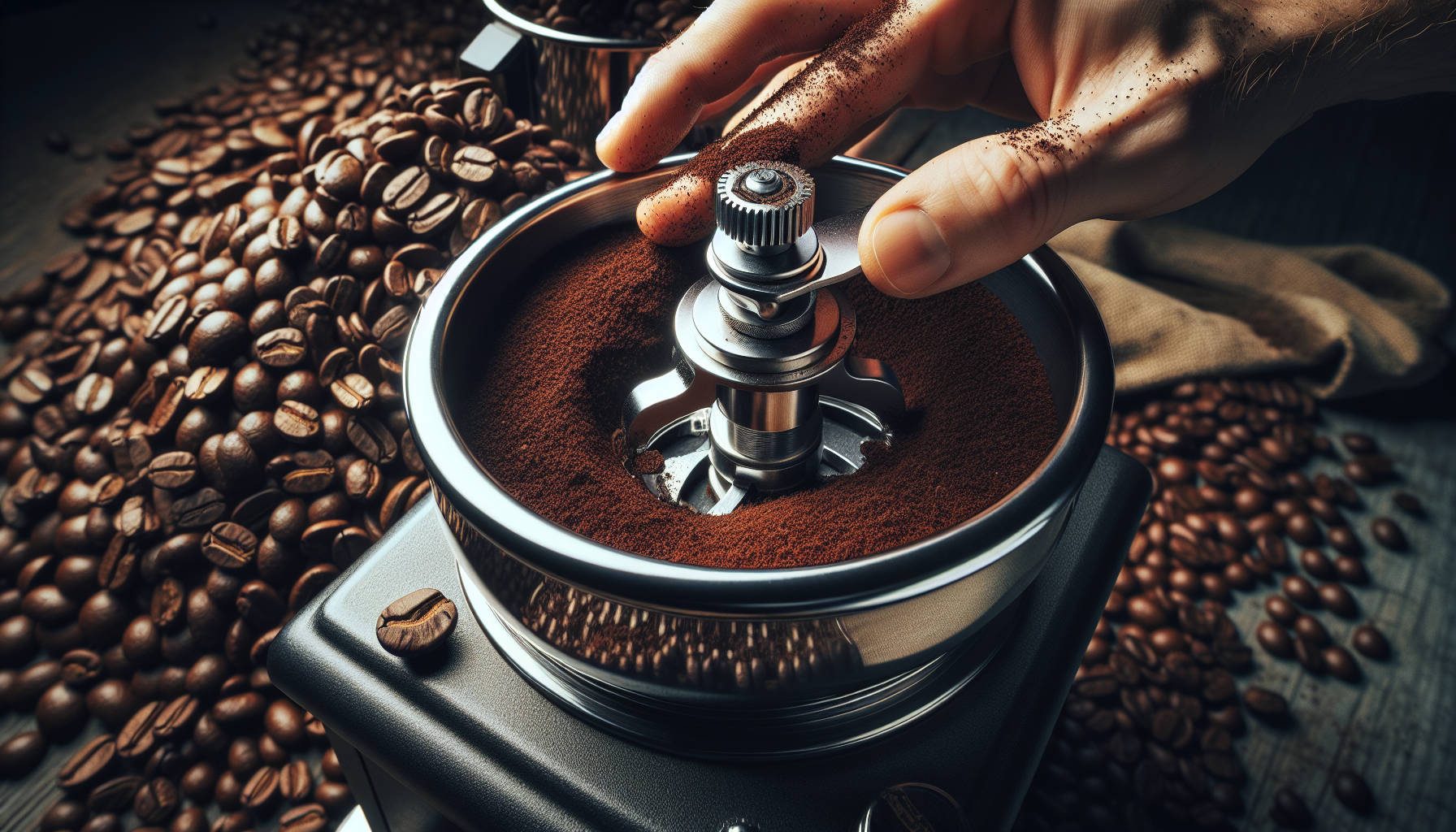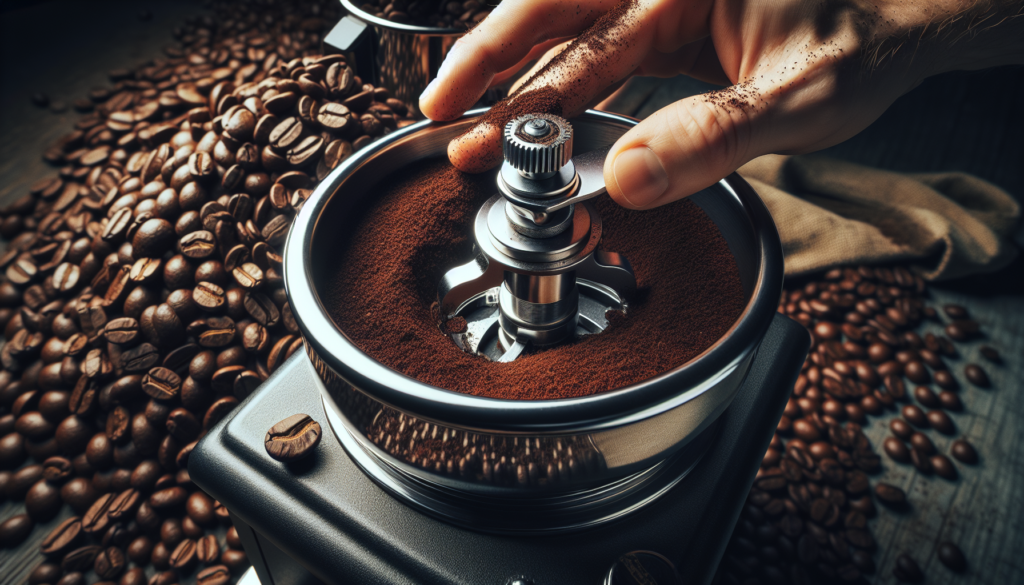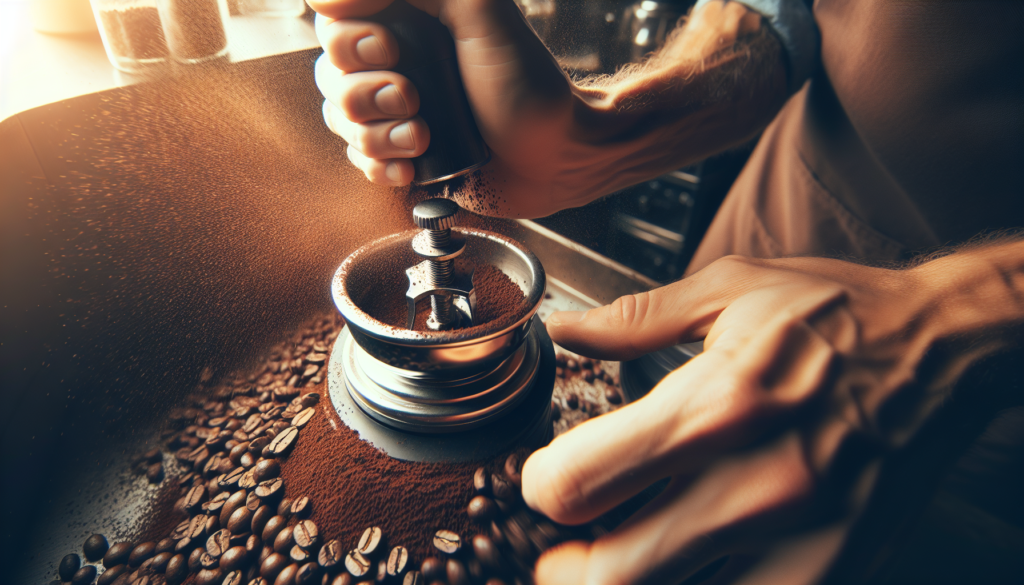
In this comprehensive guide, you will discover everything you need to know about coffee grinder settings to achieve the perfect extraction for your cup of joe. From understanding the impact of grind size on flavor to unraveling the mysteries of grind consistency, this article will equip you with the knowledge and techniques necessary to elevate your coffee brewing game. So grab your favorite mug and get ready to unlock the secrets behind mastering the art of coffee grinding.

Choosing the Right Coffee Grinder
When it comes to brewing the perfect cup of coffee, choosing the right coffee grinder is essential. There are two main types of coffee grinders to consider: burr grinders and blade grinders.
Burr Grinder vs. Blade Grinder
A burr grinder is often considered the superior option when it comes to grinding coffee beans. This type of grinder uses two burrs to crush the beans into a consistent size, resulting in a more even extraction. On the other hand, blade grinders use spinning blades to chop the beans, which can lead to an inconsistent grind size.
Manual vs. Electric Grinder
Another factor to consider is whether you prefer a manual or electric grinder. Manual grinders require you to manually turn a handle to grind the beans, which can take some effort. Electric grinders, on the other hand, are more convenient and efficient, but they may be noisier and more expensive.
Grind Size Range
Different brewing methods require different grind sizes. Some grinders offer a wide range of grind sizes to accommodate various brewing styles, from coarse grinds for French press to fine grinds for espresso. Consider the brewing methods you enjoy and ensure that the coffee grinder you choose can provide the right range of grind sizes for your needs.
Understanding Coffee Extraction
To truly appreciate the importance of grind settings on a coffee grinder, it’s crucial to understand the concept of coffee extraction.
What is Coffee Extraction?
Coffee extraction is the process through which water extracts the desirable compounds from coffee grounds, resulting in the aromatic and flavorful cup of coffee we all love. When the water comes into contact with the ground coffee, it dissolves and extracts the flavors. However, not all compounds in coffee are desirable, and achieving the perfect extraction balance is key to a great cup of coffee.
Factors Affecting Extraction
Several factors affect the extraction process, including water temperature, brew time, and grind size. Each of these factors plays a role in determining the taste and strength of the resulting brew. By understanding how these factors interact, you can adjust your grind settings to achieve the desired flavor profile.
Why Grind Size Matters
Grind size plays a crucial role in coffee extraction. The size of the coffee particles affects the rate at which water comes into contact with the coffee and how long the extraction takes place. A finer grind allows for more surface area contact with water, resulting in a faster extraction, while a coarser grind slows down the process. Finding the right grind size ensures optimal extraction and allows you to control the flavor and strength of your brew.
Grind Size and Extraction
Now that we understand the basics of coffee extraction, it’s time to explore the relationship between grind size and extraction in more detail.
The Relationship Between Grind Size and Extraction
Grind size directly impacts the extraction process. Finer grinds tend to release more flavors and compounds, resulting in a stronger and more aromatic brew. Coarser grinds, on the other hand, lead to a milder and less intense cup of coffee. By adjusting the grind size, you can control the extraction and tailor the taste of your coffee to your preference.
Under-Extraction
Under-extraction occurs when the coffee grounds are not extracted long enough or using water that is too cool. This often results in a weak and sour-tasting cup of coffee. To tackle under-extraction, consider using a finer grind size and adjusting the brewing time or water temperature accordingly. Experimentation is key in finding the right balance for a perfect cup.
Over-Extraction
Conversely, over-extraction happens when coffee grounds are extracted for too long or with water that is too hot. This leads to a bitter and unpleasant taste. To combat over-extraction, try using a coarser grind size and adjusting the brewing time or water temperature as needed. Finding the sweet spot will help you achieve a well-balanced cup of coffee.

Grind Settings on Coffee Grinder
Now that we understand the link between grind size and extraction, let’s dive into adjusting the grind settings on a coffee grinder.
Steps to Adjust Grind Settings
Adjusting the grind settings on a coffee grinder may vary depending on the model, but here are a few general steps to follow:
-
Familiarize yourself with the grinder’s settings: Most coffee grinders have a dial or knob that allows you to adjust the grind size. Take a moment to understand how your particular grinder works.
-
Start with a coarse or medium grind: If you’re unsure about the right grind size, begin with a medium setting and make small adjustments from there.
-
Test the grind size: Grind a small amount of coffee beans at your chosen setting and evaluate the grind size. Take note of any noticeable differences in texture and adjust accordingly.
-
Repeat and refine: Keep adjusting the grind size until you achieve the desired extraction and flavor profile. Remember to take note of the settings you find most appealing for future reference.
Fine vs. Coarse Grind
The choice between a fine or coarse grind depends on the brewing method you plan to use.
-
Fine grind: Fine grinds are typically used for espresso machines and require a shorter brewing time. The fine particles allow for a quick and efficient extraction, resulting in a concentrated and rich coffee flavor.
-
Coarse grind: Coarser grinds are best suited for brewing methods like French press or cold brew, which require a longer brewing time. The larger particles slow down the extraction process, resulting in a milder and less concentrated coffee.
Understanding the appropriate grind size for each brewing method is essential for achieving the best possible outcome.
Finding the Sweet Spot
Finding the perfect grind size is often a matter of trial and error. Start with a conservative grind size and gradually adjust until you find the sweet spot that yields the desired flavor. Remember to take note of the grind settings that work best for each brewing method, as this will help you maintain consistency in future brews.
Different Grind Settings for Brewing Methods
Since each brewing method requires a specific grind size, let’s explore the recommended settings for some popular brewing methods:
Espresso
Espresso requires a fine and consistent grind size. Aim for a texture similar to powdered sugar. The fine particles maximize surface area contact with water, allowing for a quick extraction.
Aeropress
Aeropress is a versatile and forgiving brewing method. Use a slightly finer grind than you would for drip coffee, achieving a texture similar to granulated sugar. This will help ensure a balanced and flavorful cup.
French Press
French press calls for a coarse grind, resembling sea salt or coarse sand. The larger particles prevent sediment from passing through the filter and result in a full-bodied and rich brew.
Pour Over
Pour-over brewing methods, such as the V60 or Chemex, work best with a medium to medium-fine grind. Aim for a texture resembling table salt. This grind size allows for a balanced and clean extraction.
Variables to Consider When Adjusting Grind Settings
When adjusting grind settings, it’s important to consider various factors that can influence the extraction process.
Coffee Beans
Different coffee beans have different densities and moisture contents, which can impact the extraction. Experiment with different beans and take note of any variations in grind size to achieve consistency.
Roast Level
Roast level affects the grind size needed for optimal extraction. Lighter roasts require a finer grind, while darker roasts may benefit from a slightly coarser grind to balance out the flavor.
Water Temperature
The temperature of the water used for brewing can affect the extraction. Hotter water tends to extract more flavors, while cooler water may result in a milder brew. Adjust the grind size accordingly to maintain balance in your cup.
Brew Time
The brewing time also plays a role in extraction. Longer brew times require coarser grinds, while shorter brew times call for finer grinds. Experiment with different brew times and grind sizes to find the perfect combination.
Using a Coffee Grinder for Consistent Extraction
Consistency is key in achieving a consistently delicious cup of coffee. Here are a few tips to ensure that your coffee grinder helps maintain a consistent extraction:
The Importance of Consistency
Consistency in grind size is crucial for consistent extraction. By keeping the grind size constant, you ensure that the water extracts the same amount of desirable compounds from the beans each time, resulting in a reliable flavor profile.
Keeping Track of Grind Settings
Take note of the grind settings that work best for each brewing method and coffee bean. Record them somewhere accessible so that you can easily replicate the preferred settings in the future. This allows you to maintain consistency and minimize variability in your brews.
Regular Maintenance
To achieve consistent results, regular maintenance of your coffee grinder is essential. Be sure to clean your grinder regularly, removing any accumulated coffee residue or oils. This helps prevent the buildup of stale coffee particles that can affect the flavor of your brews.
Experimenting with Grind Settings
Part of the joy of coffee brewing is experimenting with different grind settings to discover your perfect cup. Here are some benefits to exploring and fine-tuning your grind settings:
Tasting Different Extraction Levels
By adjusting grind size, you can taste the various extraction levels. Try brewing some coffee grounds at different grind settings and compare the flavors. This experimentation allows you to understand the impact of grind size on extraction and develop a deeper appreciation for the complexities of coffee.
Fine-Tuning to Personal Preference
Everyone’s taste preferences are unique. Experimenting with grind settings allows you to fine-tune your coffee to suit your personal preference. Whether you enjoy a strong and bold brew or a milder and more delicate cup, adjusting the grind size helps you achieve the perfect balance.
Recording and Replicating Results
As you explore different grind settings, remember to record your findings. Keep a coffee journal or note app where you can document the grind sizes, brewing methods, and the resulting flavors. This documentation allows you to replicate your preferred brews in the future and avoid any guesswork.
Troubleshooting Common Extraction Issues
Despite your best efforts, you may encounter some common extraction issues. Here’s how to troubleshoot them:
Sour or Under-Extracted Coffee
If your coffee tastes sour or under-extracted, it might indicate that the grind size is too coarse, or the brewing time is too short. Try using a finer grind size and extending the brewing time to allow for more extraction and achieve a balanced flavor.
Bitter or Over-Extracted Coffee
On the other hand, if your coffee tastes bitter or over-extracted, it suggests that the grind size is too fine, or the brewing time is too long. Adjusting the grind size to be coarser and reducing the brewing time can help mitigate bitterness and achieve a smoother flavor.
Uneven Extraction
Uneven extraction occurs when some portions of the coffee grounds extract more than others, leading to an imbalanced brew. This issue can be resolved by ensuring an even grind size and maintaining consistent brewing techniques. Regularly cleaning your coffee grinder will also contribute to a more even extraction.
Tips and Tricks for Perfect Extraction
To achieve the perfect extraction, consider the following tips and tricks:
Practicing Patience and Precision
Brewing coffee is an art that requires patience and precision. Take the time to adjust and fine-tune your grind settings, using small increments until you achieve the desired flavor profile. Remember, even the smallest changes can yield significant differences in taste.
Grinding Freshly Roasted Beans
Freshly roasted beans contribute to a more flavorful brew. Try to purchase whole beans and grind them just before brewing. This ensures that the flavors are at their peak and allows you to fully enjoy the nuances of the coffee.
Understanding Extraction Ratios
Extraction ratios refer to the ratio of coffee grounds to water, which greatly impacts the strength and flavor of the brew. Experiment with different ratios to find the ideal balance for your taste preferences. Record your extraction ratios along with the grind settings and brewing methods to replicate your favorite brews consistently.
In conclusion, the coffee grinder plays a vital role in achieving the perfect extraction. By understanding the relationship between grind size and extraction, experimenting with different settings, and considering various variables, you can unlock the full potential of your coffee beans. Take the time to explore and fine-tune your grind settings, and you’ll be rewarded with a truly exceptional cup of coffee every time you brew.